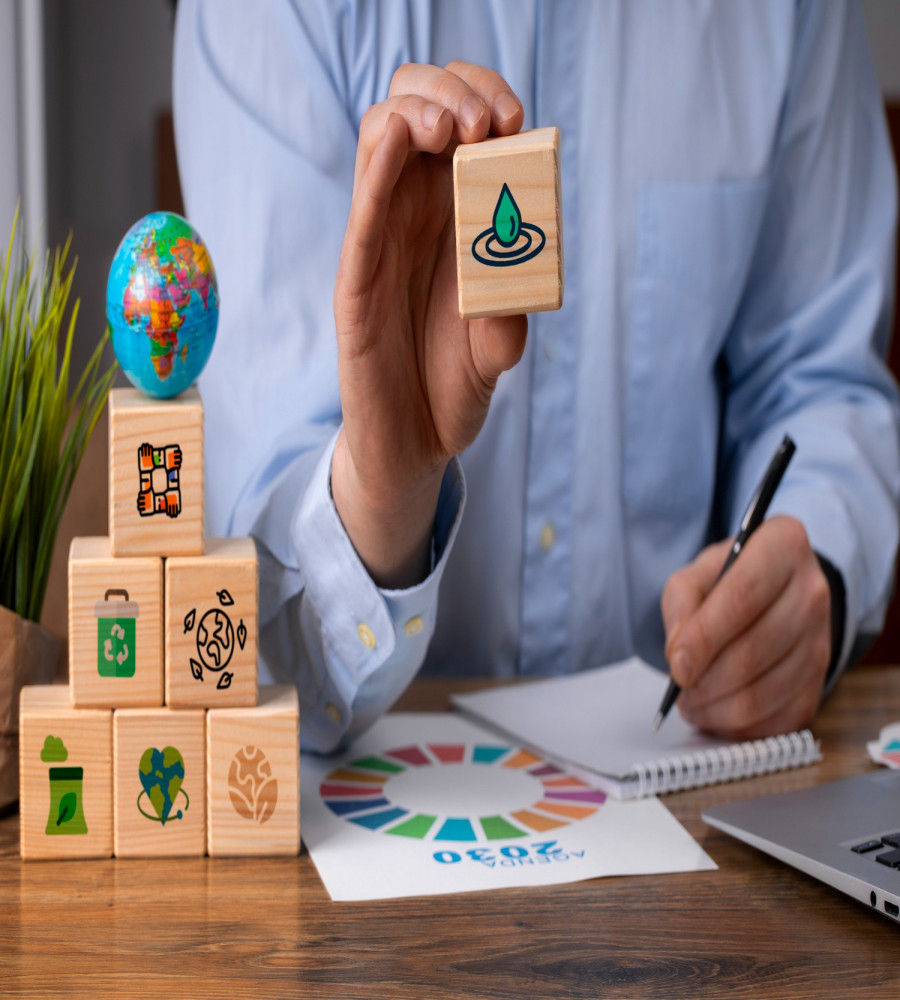ESG 2024: The Future of Sustainable Investing
Sustainability Resources for Singaporean Businesses and Individuals
Interview with a Sustainability Expert on the Biggest Challenges and Opportunities Facing Singapore
Case Study: How One Singaporean Sustainability Practitioner is Making a Difference
The Future of Sustainability in Singapore

In a world increasingly conscious of its environmental footprint and the need for sustainability, businesses and product developers are reevaluating their approaches. Agile methodology, originally conceived as a flexible, customer-centric framework for software development, has found a new role in promoting sustainability in product development. This article will delve into the integration of Agile principles to build sustainable products, emphasizing environmentally and economically responsible practices. From Agile fundamentals to best practices and real-world case studies, learn how to leverage Agile for sustainable product development.
Understanding Agile and Its Principles
Before we explore the role of Agile in sustainable product development, let's first grasp the core principles and concepts of Agile methodology:
Customer-Centricity: Agile places customers at the center of product development, emphasizing continuous feedback and collaboration.
Iterative and Incremental Development: Agile encourages incremental progress with frequent releases, allowing for flexibility and adaptation.
Cross-Functional Teams: Agile teams consist of members with diverse skill sets, fostering collaboration and collective ownership.
Embracing Change: Agile welcomes changing requirements, even late in development, as a means to enhance the product's value.
Deliver Working Products: The primary measure of progress in Agile is the working product, not just documentation.
Agile for Sustainable Product Development
Sustainable product development, whether it pertains to minimizing environmental impact or ensuring long-term economic viability, aligns well with Agile principles. Here's how Agile can be harnessed for sustainable product development:
Continuous Customer Feedback
Agile's core principle of ongoing customer feedback is invaluable for building sustainable products. Sustainable products need to cater to evolving customer demands and preferences. By engaging customers throughout the development process, Agile ensures that the product remains relevant and meets market expectations.
Incremental Improvements
Sustainable product development often involves a focus on gradual enhancements that contribute to long-term sustainability. Agile's incremental approach aligns perfectly with this concept. By making small, continuous improvements in each development cycle, businesses can steadily enhance their products' sustainability features.
Cross-Functional Collaboration
Agile teams consist of members with diverse expertise. In sustainable product development, this diversity is beneficial for addressing various sustainability aspects, such as environmental impact, cost-efficiency, and resource management. Collaboration among cross-functional team members ensures that sustainability is considered from multiple angles.
Adaptability to Changing Regulations Sustainable products are often subject to evolving environmental regulations and standards. Agile's flexibility allows product development teams to quickly adapt to these changes. Whether it's adjusting materials or production processes to meet new environmental requirements, Agile facilitates compliance without derailing the project.
Measuring Progress with Tangible Results In Agile, the emphasis is on delivering working products. This aligns with the need for tangible results in sustainable product development. Rather than just making promises or creating extensive documentation, Agile ensures that sustainable features are integrated into the product, and their effectiveness can be measured.
Best Practices for Agile Sustainable Product Development
To effectively combine Agile with sustainability goals, consider the following best practices:
Define Clear Sustainability Objectives Clearly define sustainability objectives, whether they involve reducing carbon emissions, conserving resources, or ensuring economic viability. These objectives should align with the Agile framework to drive product development.
Engage Stakeholders Actively
Engage stakeholders, including customers, environmental experts, and regulatory bodies, as active participants in the development process. Their insights are critical to achieving sustainability goals.
Set Sustainable Development Metrics Define key performance indicators (KPIs) related to sustainability. These metrics can include energy efficiency, waste reduction, or compliance with environmental regulations. Regularly measure and assess progress toward these goals.
Prioritize Sustainable Features
Prioritize sustainability features within the product backlog. Make them visible to the team and stakeholders, ensuring that sustainability is a central focus of the development process.
Regular Sustainability Reviews
Incorporate sustainability reviews into your Agile sprint or iteration reviews. This ensures that sustainability goals remain in the forefront and are continuously evaluated and adjusted.
Sustainability as a Team Value
Promote sustainability as a core value of the Agile team. Encourage team members to actively seek ways to improve sustainability and integrate it into their daily work.
Real-World Examples of Agile Sustainability
To illustrate how Agile can drive sustainable product development, let's explore a few real-world examples: Eco-Friendly Packaging
Renewable Energy Solutions
A clean energy company aimed to develop renewable energy solutions using Agile methodology. They organized cross-functional teams that included engineers, environmental scientists, and financial analysts. The iterative approach enabled them to continually refine the design and feasibility of renewable energy projects. Agile's adaptability allowed them to navigate changing energy regulations and optimize project sustainability.
Recycling Technologies
An electronics manufacturer sought to develop products with a focus on recyclability. Agile principles allowed them to incorporate sustainability considerations into the product development process. Cross-functional teams collaborated on designing products that were easier to disassemble and recycle. Frequent iterations ensured that these features were well-integrated into the final products.
Challenges and Considerations
While Agile offers a robust framework for sustainable product development, it's not without challenges: Balancing Speed and Sustainability
Regulatory Compliance
Conclusion
Agile methodology and sustainability are not incompatible goals; in fact, they complement each other remarkably well. Agile's focus on continuous improvement, customer collaboration, and flexibility aligns perfectly with the core principles of sustainability. By incorporating sustainability objectives into the Agile framework and actively involving stakeholders, businesses can develop products that are not only environmentally responsible but also economically viable.
The real-world examples presented demonstrate that Agile can drive sustainable product development across various industries. While challenges exist, Agile's adaptability and incremental approach make it a valuable ally in the quest for sustainability. By embracing Agile for sustainable product development, businesses can address environmental concerns, respond to changing regulations, and meet customer demands for products that are both eco-friendly and high-quality.

